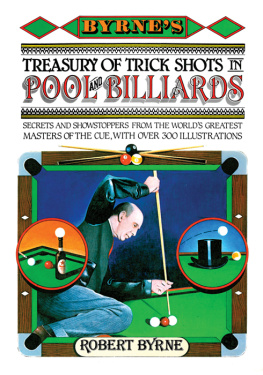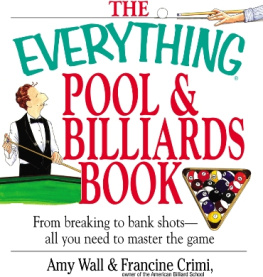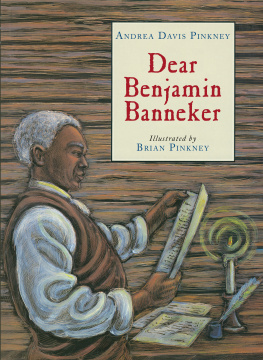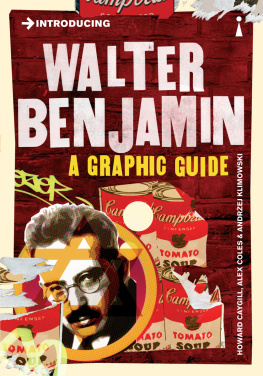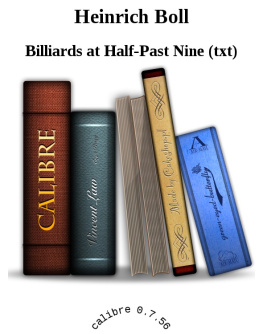INTRODUCTORY.
Apart from its inviting to moderate and wholesome exercise, billiards, as popularly played, is pre-eminently a mental pastime. Nearly all its exponents of approved skill, whatever were the drawbacks of their youth, are intellectually quick and bright. This is due in some measure to the ready mathematical requirements of the play as a routine, but in a much greater degree to its taxing the eye, stimulating the fancy, and disciplining the mind by imposing watchfulness, invention, and analysis. Slowness is costly, and hence, as an early habit, an eager alertness of vision, alacrity of step, and promptitude of decision.
Regarding billiards as a spectacle, its physical requisites to perfection are keen sight, level head and steady hand; but they are by no means essential to enjoyment of it as a leisure-hour diversion en amateur . In this sense, its charm lies altogether in participation, which is all the more agreeable and healthful because never needing to be exhausting.
Caroming methods are still changing. Execution is again growing less fantastic and more practical. Systemization is becoming more and more dominant. In consequence, certain gathering shots, depicting instructive possibilities rather than downright needs, and diagrammed as still proper to teach when the earlier edition of this book was issued, have no place in the present volume.
Play has been made harder in theory, but easier in fact. Lowering the cushion first and the table next has facilitated most strokes, and particularly those dependent upon elevating the cue. Our fathers knew piqu , but seldom mass . Drawing a ball without hopping it has been made surer. Cloths were once so much heavier in nap that ironing new ones again and again, until the iron burned them out, was the method here, as it is in certain other countries yet. Although longer than the present ones by several inches, yet still choice cues of old rarely went beyond eighteen ounces. For special needs there are cues now whose butts alone are heavier than an old-fashioned cue in its entirety. The lighter ashen sticks of the past were meant for a greater variety of shots than the experts carom game of to-day has use for. Styles of play as a matter of contest are also different. If the present generation know better how to count, their elders knew better when not to try and count.
There has been progress in more directions than one. A light-weight cue never before handled by its wielder played the last 1900 points of a memorable contest. Our Record has no other one-night match so impressive for headwork, handicraft, and hazard. In the same year, and in the same State, a mile in harness was trotted in 2:19, but under wholly different conditions from those which to-day govern track, equipment, transportation, and individual effort. As in the popular eye some Cresceus or Lou Dillon now completely obscures the bob-tailed, homely little bay mare at Kalamazoo, so the billiard giants of these times are apt to overlook that the credit they receive for a marvelous progress as counters may not be exclusively their own. Some share in it is possibly due to improvements that first-class mechanicians have made in billiard implements. Rubber vulcanized in layers of different densities in the one strip have made cushion-angles trustier, cloths are of closer shear and more uniformly spread, choice cue-leathers are choicer, cues have grown magical in their mere heft of hilt, and vanished is the muslin under-cloth that helped the balls to dig their graves deep into the one of green. Rarely seen, if ever now, is the serrated cushion, with a face like a saw whose dulled teeth are set inches apart, and not often is there complaint that the speed of the bed is greater than that of the return from the cushion, or else not quite so great.
HISTORICAL.
Billiards was practically without beginning. As with untold other excellences, so with that. Until merit is established, curiosity as to origin rarely begins. When merit is acknowledged, it is too late to trace origin.
Let us to billiards, Charmion, is one of Shakespeares many anachronisms. As introduced into Antony and Cleopatra, its significance is simply that the amusement was growing in favor at the English court in the time of Elizabeth, Shakespeare, and Mary, Queen of Scots, the last of whom had brought her table over with her from France.
The diligent student may read that Socrates played billiards, that Anacharsis saw it played during his travels in Greece, that St. Augustine saw a billiard-table in journeying to or in Africa, and that Cathire More, an Irish king of the second century A.D. , bequeathed to his nephew fifty billiard-balls of brass, with the pools and cues of the same material. But the student must not go so far back as the originals in his search, lest he discover that all are translators errors. St. Augustines vision has proved to be nothing else.
Billiards is also of quasi-historical record as having been invented by Henri de Vigne, a Frenchman, for the amusement of Louis XI. As runs a story more explicit, though probably no trustier, De Vigne was only a carpenter, or cabinet-maker, who, at the order of Louis, fashioned a billiard-table with a bed of stone, covered with cloth, and having a hole in the centre, into which the balls were driven.
A more plausible recital is that the game was introduced to both France and England centuries before, when the Knights-Templars returned from their first or second crusade in the Holy Land. But why not have been introduced into Spain and Italy at the same period? Rome should have been a likely spot for this game of the monasteries of the East to reach, and yet Romes ample archives seem to have shed no light upon it, although we find the Lives of the Roman Pontiffs mentioning one Pope who was fond of billiards, it being the Italian game of a century or so ago. Any game of Eastern origin should have reached Spain, through the Moors, centuries before France or England got it via Palestine.
History is no happier in taking liberties with our own country by variously assigning the honor of introducing billiards here to the Spaniards in Florida under De Soto, to the English Cavaliers in Virginia, to the Huguenots settling in South Carolina in 1690, and to the primitive Hollanders of Manhattan Island. But why not to the earlier Spaniards in Florida under Ponce de Leon, to the English Cavaliers who settled one-half of the province of New Jersey, and to the Huguenots who founded New Rochelle, N. Y., at the same time that kindred refugees found lodgment in South Carolina? Other nationalities have both played the game and kept rooms in once pre-eminently cosmopolitan Holland, but the Dutch themselves have never-been a billiard-playing people; and the official proceedings before the schouts, scheppens and burgomasters of New Amsterdam may safely be challenged to show any allusion whatever to billiards.



